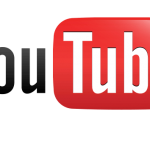Investing in climate control equipment is a significant decision for any property owner. Proper maintenance and care can greatly affect how long this equipment lasts and how well it performs over time. By implementing the right strategies, one can avoid costly system replacements and ensure enduring efficiency in temperature regulation.
Regular attention to your climate control setup can help identify potential issues before they escalate into severe problems. Understanding how certain practices can prolong the operating period of these devices is vital. Simple steps such as changing filters, scheduling maintenance checks, and keeping the outdoor unit clear of debris play a significant role in maintaining functionality.
It is also important to consider the age of your equipment and the specific demands of your environment. Tailoring care and usage based on these factors can lead to a substantial increase in durability. Knowledge of operational best practices empowers owners to make informed choices, prolonging the service life of their essential climate solutions.
Regular Maintenance: Key Tasks to Schedule
Keeping your climate control unit in excellent working condition requires diligent care and consistent upkeep. Regular inspections play a fundamental role in identifying potential issues before they escalate into costly repairs or replacements. During these assessments, technicians can check for wear and tear, ensuring that all components are functioning optimally.
Cleaning filters is one of the primary tasks that should not be overlooked. Dirty filters can impede airflow and force the unit to work harder, leading to undue strain on the system. It is advisable to replace or clean these filters at least every few months, depending on usage and environmental factors.
Another key task involves examining and cleaning the outdoor unit. Debris, leaves, and dirt can obstruct airflow and limit operational efficiency. Maintaining clear surroundings around the external compressor ensures that air can circulate unhindered.
Periodic checks on refrigerant levels are also important. Insufficient refrigerant can lead to inefficient cooling and increased energy usage. Technicians should assess these levels and ensure that they are within manufacturer specifications, making adjustments as necessary.
Component upgrades may be beneficial during these maintenance visits. An experienced technician can suggest improvements that enhance overall performance, from advanced thermostats to high-efficiency fans, which can provide better comfort and lower energy bills.
Scheduling regular annual inspections not only extends the operational life of your equipment but also promotes peace of mind. Through this proactive approach, you are less likely to face unexpected breakdowns and the need for premature system replacements.
Choosing the Right Filters and Changing Them Frequently
Selecting appropriate filters for your heating and cooling machinery plays a significant role in enhancing its operational efficiency and prolonging its functional life. Filters that are designed to capture dust, allergens, and other particulates not only improve air quality but also prevent unnecessary strain on the entire unit.
Here are some crucial points to consider when choosing and changing filters:
- Opt for filters with a high MERV rating, which indicates greater efficiency in trapping particles.
- Ensure that the size of the filter matches the specifications of your equipment to prevent leaks and ensure optimal performance.
- Evaluate filter types such as HEPA, pleated, or washable, depending on your specific needs and preferences.
Changing filters regularly is equally critical. Clogged or dirty filters can restrict airflow, leading to increased energy consumption and potential system failures. Regular replacement can prevent the need for costly system replacements. Consider these recommendations:
- Check filters monthly, especially during peak usage seasons, and replace them every 1-3 months as needed.
- Keep track of the last replacement date to establish a routine for maintenance practices.
- Set reminders to ensure timely filter changes and avoid neglect.
Incorporating a habit of regular filter inspections will not only promote better air quality but also minimize wear and tear on machinery components, reducing the necessity for repairs and interventions. To learn more about optimizing your equipment and scheduling regular inspections, visit https://mdairheatingandcooling.com/.
Optimal Thermostat Settings for Longevity
Proper thermostat adjustments play a significant role in extending the lifespan of climate control equipment. Maintaining a consistent temperature reduces the strain on essential machinery components, lessening the likelihood of system replacements. Aim for a temperature setting around 78°F in warmer months and 68°F during colder periods. These ranges promote comfort while minimizing workload.
Utilizing programmable or smart thermostats can further enhance energy efficiency. These devices allow for pre-determined temperature schedules, adapting to personal habits and reducing operating hours during inactive periods. The result is less frequent wear on vital parts and a diminished need for maintenance practices associated with constant cycling.
Consider gradual transitions when adjusting settings. Sudden changes can create additional pressure on components, leading to potential breakdowns. A steady approach helps retain operational integrity while preserving each element’s functionality.
Regularly check and update your thermostat calibration. An inaccurate reading can cause unnecessary heating or cooling, ultimately leading to premature component upgrades and increased utility bills. Ensuring that your device accurately reflects the ambient temperature contributes to more predictable efficiency.
Additionally, utilizing features like vacation mode can be advantageous. This setting allows for temporary temperature adjustments that save energy while safeguarding against extreme conditions that could damage the equipment during extended absences.
Identifying and Addressing Common Issues Early
Timely detection of typical malfunctions can significantly enhance the operation and durability of your climate control equipment. Familiarize yourself with warning signs such as unusual noises, fluctuating temperatures, or increased energy bills, as they often indicate underlying problems.
Prioritize routine inspections to catch potential concerns before they escalate. Look for clogged ducts, faulty electrical connections, or signs of wear in critical components. Addressing these minor issues promptly can stave off major repairs or complete replacements.
In some cases, upgrading specific elements, like fans or compressors, may be more cost-effective than waiting for total system failure. Regular maintenance practices, such as cleaning coils or checking refrigerant levels, play a significant role in preventing breakdowns and extending performance.
If required, seek professional evaluations to ensure all elements are functioning optimally. Staying proactive with your equipment not only enhances its performance but also prevents unexpected costs associated with major repairs.



